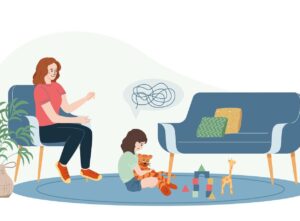Understanding Trauma Bonding
This article has been researched and written by Moni El Ramlawy. AI has not been used in producing this article.
Trauma bonding is a confusing emotional attachment that forms between a person and someone who repeatedly harms, manipulates, or mistreats them. It’s a relationship where “love” feels inconsistent. It’s a relationship fueled by cycles of abuse and intermittent kindness. This dynamic can occur in romantic relationships, family systems, friendships, and even workplaces.
So… what is “trauma bonding” really?
At its core, trauma bonding happens when abuse is paired with moments of warmth or affection. Your brain starts to think the comfort you feel after being hurt is the same as love or safety. Over time, the nervous system learns to crave those “good” moments, even if they are rare, because they temporarily soothe the pain caused by the same person. This cycle creates an emotional dependency – making it difficult for someone to leave, even when they know the relationship is harmful.
You may read this and think, how did I get stuck in this pattern? Or how did this even begin? This kind of relationship usually begins with affection and connection until criticism, neglect, manipulation, or emotional withdrawal begins. The type of abuse may be emotional, physical, or sexual. Then comes the reconciliation – apologies, affection, or small acts of kindness. Then there’s a sense of calm. The cycle then resets and creates hope for lasting change. This cycle creates an emotional dependency – making it difficult for someone to leave, even when they know the relationship is harmful.
Why do people stay?
There is often a misconception that staying in such a relationship is about weakness. However, the reality is sometimes rooted in attachment needs. If a person experienced neglect or inconsistent caregiving in childhood, unpredictability can feel familiar – even “normal”. Another reason is, there’s always hope for change. Small acts of kindness feel like a breath of fresh air and proof that things can be different. Other times, people stay out of fear when control, intimidation, financial dependence, or isolation are involved. They feel trapped.
Breaking the Cycle
Healing from a trauma bond takes time, safety, and support:
- Recognize the Pattern: Naming what’s happening can reduce shame and confusion.
- Create Distance: Physically and emotionally stepping back helps break the pattern.
- Seek Support: Trauma-informed therapy, support groups, or trusted friends can provide perspective.
- Rebuild Self-Trust: Learning to listen to your instincts and boundaries is key.
- Address Underlying Trauma: Understanding your attachment history can help prevent repeating the pattern.
Trauma bonding is not a sign of weakness – it’s a human survival response. Breaking free requires compassion for yourself, a recognition of how your nervous system has adapted, and steady, consistent support.
How to Talk to Your Child About Body Safety – Without Creating Fear
Body safety talks don’t have to be and shouldn’t be scary. When these conversations are calm …
ADHD in Girls vs. Boys: Why Symptoms Often Look Different
When people think of ADHD, they often picture a young boy bouncing off the walls, constantly moving, talking out of turn, or …
How Psychoeducational Assessments Help Shape Better Learning Plans in School
No two children are the same. Every child brings a unique mix of strengths, challenges, and ways of …
Can Relationship Counseling Work for Toxic Relationships?
Relationships can be complicated, emotional, and at times, painful. While every couple experiences ups and downs, some relationships …
10 Signs You May Have Anxiety
Anxiety is a normal and natural human response to stress, danger, or uncertainty. However, when anxiety becomes excessive, it can …
Child Sleepwalking and Talking: What You Need to Know
Childhood is a time of rapid development, filled with new experiences—and sometimes, surprising nighttime behaviors.
Questions a Child Psychologist Might Ask
When preparing for your child’s first appointment with a psychologist, it’s natural to feel curious—or even a little anxious—about what …
55 Love Questions for Couples to Deepen Your Relationship
In any relationship, communication is key. Whether you’re just starting out or have been together for years, asking meaningful
Stress vs. Anxiety vs. Burnout: How to Recognize the Difference
In today’s fast-paced world, understanding the differences between stress, anxiety, and burnout is crucial for …
Relocation Depression: Definition and Ways to Cope
Relocation depression, also known as moving depression, is a form of situational depression that arises from the stress …











